TRENDING
Extraordinary Wild West Hygiene Practices
Published
5 years agoon
Back in the days of the Wild West, hygiene definitely wasn’t a priority, but cowboys, townspeople and natives alike all still realized the necessity of preserving their bodies to the best of their abilities. While it was a struggle, they actually came up with many innovative techniques.
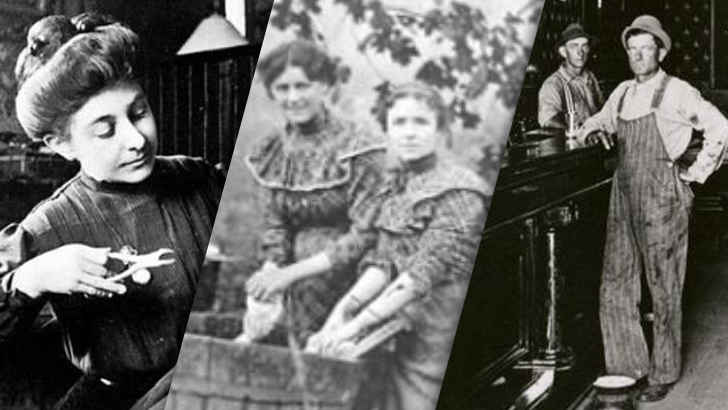
Learning often came by practice, and many misfounded theories were cleared up, paving way to more breakthroughs actually founded on scientific evidence. While the original thoughts and practices may have been a shot in the dark, you’d be stunned to learn how these people got buy and actually improved hygiene as we now know it…
Families Would Use The Same Bath Water

Water heaters weren’t exactly common housing components during the 1800s, so it actually took a lot of work to heat up water for baths. As such, most families simply bathed one at the same time, one right after the other, rather than go through the hassle of heating water and filling the tub numerous times. The oldest always went first starting with the grandparents, so you can imagine how gross that water must have been after a good half-dozen people used it.
Fun fact: the phrase “Don’t throw the baby out with the bathwater” stemmed from this common practice.
Dentists Thought That Worms Caused Toothaches

In a time before dental floss and mouthwash were invented, tooth decay was incredibly common; enough that when people began complaining of massive toothaches, physicians actually believed that the culprits were worms that had burrowed into the teeth. To combat these pesky tooth worms, they would fan candle smoke directly into patients’ mouths in order to create a less worm friendly environment.
People Slept In Bud-Ridden Beds

Rather than sleep on the dirt floor, settlers opted to make their lives just a little more comfortable by devising straw beds. While this solved the comfort issue, it quickly created multiple other issues in the form of hay-burrowing insects like lice that also enjoyed these straw mattresses. And since these beds were rarely washed, homes quickly became infested with all manner of creepy crawlies that were more than happy to lay their larva and contaminate food.
Clean Water Was Hard To Come By

Drinkable water was not a common luxury in the age of the Wild West. Most water sources were either stagnant ponds that were breeding grounds for insects and bacteria brought in by thirsty horse herds, or small rivers. But even those rivers were susceptible to contamination from things like leaking outhouses. Rainwater collected in cisterns was the safest bet, but even that had a quick expiration date.
Hair Care Was Primitive At Best

Before women had every kind of hair care product imaginable at their disposal, keeping the hair clean wasn’t exactly what you would call hygienic. Some women even went so far as to use a mixture of whiskey and castor oil to give their hair that luscious sheen, followed by a thorough rinse using either rainwater or a sodium-based chemical called borax.
Things Got Messy Pre-Toilet Paper

Before toilet paper was officially patented at the end of the 1800s, settlers and frontiersmen had to make do with what they had – and what they had wasn’t very good. Considering how valuable sack cloths and fabrics were, people had to rely on things like dried grass and leaves, small rocks, shells, and twigs to clean up after themselves. Not exactly what you would call sanitary.
Most Soaps Were Harmful To The Skin

While more well-off individuals could afford to buy high-end soap made from the yucca plant that left the skin refreshed and smooth, most people had to settle for soaps made from animal fat. These soaps were quite harsh and abrasive, and would often leave the skin feeling dry and irritated. Without proper soaps that actually cleaned and sanitized, body odor quickly became a rampant issue. This lesser soap did have one somewhat positive effect, though – pores that were overly clean had a higher chance of being exposed to bacteria and diseases.
Outhouses Were Worse Than You Think

While it isn’t difficult to imagine that a hole in a shed isn’t exactly the ideal toilet, outhouses were so much worse than just smelly loos. Outhouses were commonly built far too close to houses, which only increased the risk of fecal bacteria contamination, not to mention the infestation of bugs and insects that they attracted. And once a hole eventually filled to capacity, the outhouse was simply relocated to another corner of the house.
Long Locks Were Quite Unsanitary

Spending time on the road became a staple component of Wild West living, and men would often leave their hair untrimmed while roughing it. As their hair grew out, some men decided to keep it as a fashion style. This quickly became problematic, however, as hot and humid temperatures created some rather unhygienic effects after months on the trail.
Fungal Infections Posed a Huge Problem

It wasn’t uncommon for people to go weeks and even months without bathing while on the trail. After spending day after day sitting and sweating on top of a horse (all while wearing the same clothes no less), fungal infections quickly became more problematic than wildlife and bandits. These infections would cause burning sensations, typically starting in incredibly uncomfortable areas like the feet and armpits before spreading to the rest of the body due to scratching with filthy hands.
Saloon Towels Were Downright Filthy

The saloon was an iconic component of Wild West living, usually providing an environment where weary riders and people in need of stiff libations would congregate. In order to keep these saloons clean, towels would hang on hooks at the bar that would be used for all sorts of unsanitary things. A man would wipe his beard free of beer and then hang it back up, only to have the bartender grab it to wipe down the bar. The even more unfortunate thing is that these communal towels would rarely get washed. Needless to say, it wouldn’t take very long to accumulate all nature of scum and bacteria.
Toothcare Was Virtually Non-Existent

Prior to the 20th century, oral care wasn’t exactly something people prioritized. The vast majority of people didn’t own a toothbrush, which resulted in some pretty rampant tooth decay. Rather than pay good money for proper dental care, most people just exercised a form of self-dentistry. This usually included letting the tooth rot before grabbing whatever tool you had to extract it yourself. After all, why pay $10 for a dentist when a shot of whisky and a pair of sturdy pliers would do the trick?
Venereal Diseases Were Rampant

“Protection” wasn’t exactly a term people were familiar with when it came to romantic interactions. As such, there wasn’t much that could prevent the rampant spread of sexually transmitted diseases, most of which came from saloons and other less-than-reputable establishments. What’s worse, most people had no clue that diseases could arise from such engagements, much less how it spread.
People Thought Bathing Too Often Was Unhealthy

You would have thought that their ripe body odor would have told them otherwise, but people used to think that bathing too often wasn’t a healthy thing to do. Their logic was that if you bathed too often then your pores would become more opened, thus exposing yourself to additional disease and infection. Little did they know how preposterous this notion actually was.
Chewing Tobacco Was Nastier Than You Thought

Chewing tobacco was a more commonly used substance than alcohol was during the time of the Wild West, especially for cowpokes who had to prevent dry mouth while journeying through vast, dry environments. Saloons were also a popular place to chew it, so the point where small buckets – eventually dubbed “spittoons” – were placed on the floors along the bar. Very few people actually cared if the tobacco-generated spit actually landed inside of it, however, which led to some rather nasty stained wood flooring.
Women Were More Aware Of Sun Damage Than Men

While we’re well aware now of the damage that UV light from the sun can inflict on our skin, most men did very little to protect themselves from the sun beyond wearing hats and long sleeves. Women were the ones who eventually came to realize how much healthier and softer their skin looked when they covered themselves with more extensive clothing to protect their skin. In fact, protection from the sun eventually became such a widely-known fact that by the time the Industrial Revolution rolled around most jobs were moved indoors.
Some Women Resorted To Skin Bleaching

As pale, porcelain skin quickly became the fashion rage, middle and upper class women went to elaborate lengths to keep their complexions as fair as possible. Some women even went so far as to bleach their skin to get rid of all freckles and blemishes. After all, what better way to set yourself apart from the lowly, sun-burnt field workers?
Dust Was Impossible To Avoid

During the 1800s, dust storms were quite common in the American west. Many settlers wrote accounts in journals and diaries about how the abrasive dust would cause their eyes to burn. These dust storms were often quite extreme, occasionally becoming so severe that it would kill livestock. Even houses weren’t very good at keeping dust out, so people would experience eye redness and breathing problems even within their own homes.
The Chinese Would Pluck Instead Of Shave

While the Chinese historically used tweezers to smoke opium, historians also know that they used it for another less-than-hygienic purpose. Rather than shaving with cream and razors, they would use the tweezers to pluck unwanted hairs instead. While nobody knows for sure whether or not these tweezers were washed in-between, it’s a good bet that they probably were not.
Cowboys Often Reeked Of Horse Odor

Regular bar patrons were often subjected to an odor most foul whenever a thirsty cowpoke pulled into town and would immediately head to the local watering hole for some refreshments. Needless to say, after weeks of riding on the back of a sweaty horse without bathing, these riders smelled quite ripe. Bartenders didn’t care how you smelled, though, so long as you had money to spend.
Even a Minor Scratch Could Be Deadly

In a time before antiseptics became common use, life on the trail proved treacherous if even the smallest thing went wrong. Unsanitary living conditions among the settlers meant that even the smallest cut or abrasion could lead to skin infection at best – and serious (and even lethal) diseases at worst. As such, settlers had to take special care to protect themselves. After all, cholera is a nasty disease to shake, especially on the trail.
Women Set The Precedence For Hygiene

While the menfolk would go weeks without even a single bath or a change of clothes, it was the women who were far ahead of their time when it came to basic cleanliness. While bathing in general was limited due to privacy reasons, it was common for women to seek out a nearby river or stream in the morning to at least wash their faces and clean as best they could. Women also had the advantage of being indoors for most of the day, which meant that less exposure to the elements allowed them to maintain at least some form of cleanliness.
Cholera And Other Diseases Claimed Many Lives

Death from common diseases was rampant during the 1800s when decent water had to be used for drinking instead of luxuries like laundry and dishwashing. While any number of diseases could prove lethal, cholera was the biggest offender. Massive cholera outbreaks would claim thousands of lives across the American frontier, among both settlers and Native Americans alike.
Hospitals Were Bacteria Breeding Grounds

People who were “fortunate” enough to live in large enough cities had access to hospitals and clinics. In the 1800s before things like bacteria became common knowledge, these hospitals – which were intended to help people cure their illnesses – ended up doing almost as much harm as good. Physician utensils were rarely sterilized properly after use with each patient, and the improper medical practices (combined with the dangerously-close proximity patients had with each other) meant that diseases often spread like wildfire in these places of healing.
Bar Brawls Occasionally Led To Death

While level-headedness wasn’t exactly prevalent in the Wild West, things only escalated in spades once whiskey became involved. Aptly dubbed “firewater”, this ungodly concoction of burnt sugar, alcohol, and chewing tobacco led to some rather serious bar brawls, usually over the most petty things. While some of these brawls merely ended with some cuts and bruises, it wasn’t uncommon for bar brawls to skyrocket into all-out war, at which point death was a very likely possibility.
Good Hair Hygiene Eventually Became Common Practice

While most men grew their hair out into long locks during this time, it wasn’t until the end of the 1800s that men eventually came to realize the error of their ways. As industry rapidly changed the way of life for many Americans, men took to the barber shop to get their hair trimmed and washed to a length that ensured less of a home for every manner of bacteria and fungus.
Backwater Physicians Used Leeches For Medical Practice

Though academic doctors largely stopped the practice by the 1800s, a large number of small-town doctors still clung to the centuries-old belief that disease was caused by an excess of blood in the body. In order to “cure” people of what ailed them, these doctors used the same archaic practice of placing leeches on sick people’s skin in order for them to be healed. Needless to say, it didn’t work.
Spreading Out Meant Being Exposed To New Diseases

Manifest destiny had some rather serious implications when it came to basic health. As settlers migrated further west and into uncharted territory, they quickly became exposed to a host of new diseases and viruses that they had never previously encountered. Unfortunately, due to their rather poor living conditions, immune systems were no match against the wash of new exposure.
The Settlers’ Own Diseases Devastated Native Americans

Just as new diseases plagued the settlers, they also brought with them diseases of their own. While things like smallpox, measles, and the flu were common for the settlers, the indiginous Native Americans had no previous exposure to such things. As such, these new introduced diseases ravaged Native American tribes, eventually dwindling their numbers by a staggering 90%.
Public Baths Became a Fad

While some lucky few were wealthy enough to have personal bathrooms in their own homes, most of the common folk had to resort to bathing in public baths. These bath houses practically exploded in popularity among all new settlements, but the price of keeping clean meant having to bathe in very close proximity (and sometimes even the same tub) as your friends and neighbors. Considering how crude soaps were back then, you can bet that there was probably just as much exposure to the filth of fellow patrons as there was actual effective cleaning.
Public Beds
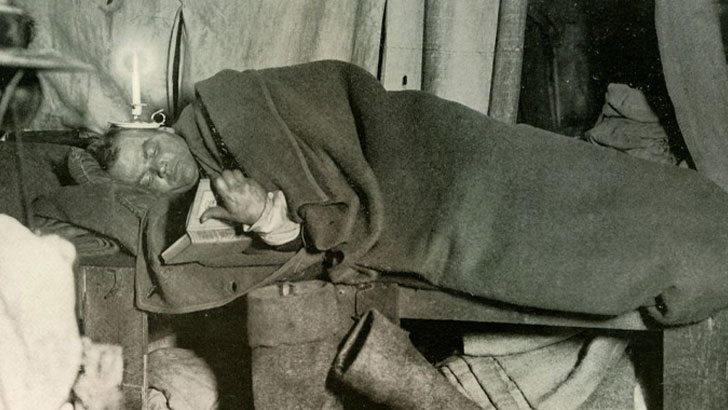 In the American Frontier, while not all beds were made from straw and hay, a significant number were and were rarely cleaned, leading to infestations of “seam squirrels” or lice, among other insects that plagued the inhabitants of the Old West. Flies and mosquitoes were ubiquitous, contaminating food and infiltrating poorly insulated structures, while the lack of screens on windows allowed all manner of insects to enter freely.
In the American Frontier, while not all beds were made from straw and hay, a significant number were and were rarely cleaned, leading to infestations of “seam squirrels” or lice, among other insects that plagued the inhabitants of the Old West. Flies and mosquitoes were ubiquitous, contaminating food and infiltrating poorly insulated structures, while the lack of screens on windows allowed all manner of insects to enter freely.
4 Types of Shampoo
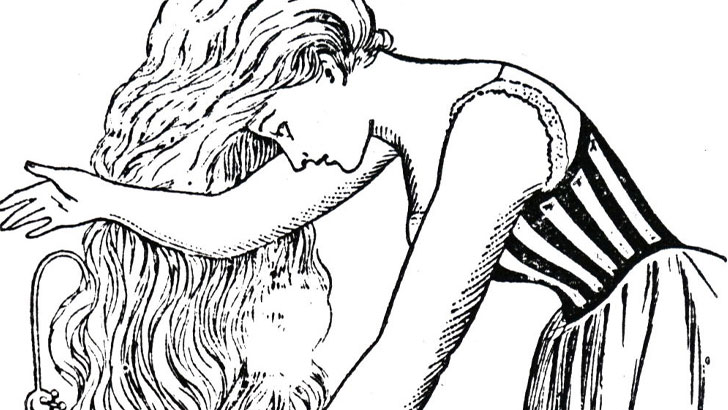 Access to soap-weed provided a means for some fortunate people to wash their hair in the past, but other methods were also utilized. Whiskey, in addition to being consumed, was employed as a multi-purpose substance that served as a disinfectant and even a shampoo. To wash their hair, individuals mixed whiskey with castor oil and then rinsed their hair with rainwater or water softened with borax. Women, on the other hand, often used heated pencils as makeshift curlers for styling their hair.
Access to soap-weed provided a means for some fortunate people to wash their hair in the past, but other methods were also utilized. Whiskey, in addition to being consumed, was employed as a multi-purpose substance that served as a disinfectant and even a shampoo. To wash their hair, individuals mixed whiskey with castor oil and then rinsed their hair with rainwater or water softened with borax. Women, on the other hand, often used heated pencils as makeshift curlers for styling their hair.
Long-Haired Men
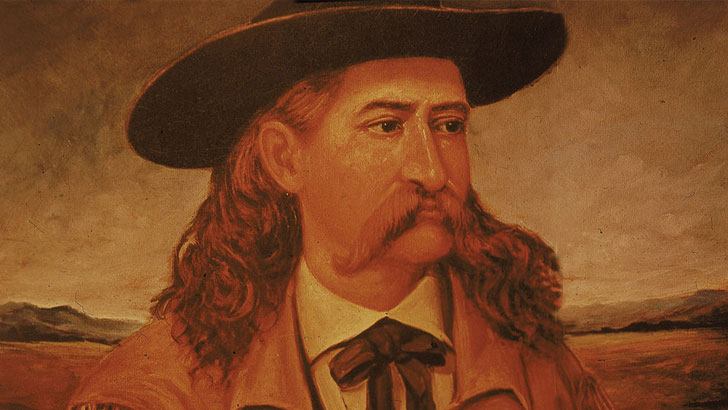 Despite the challenges of maintaining cleanliness and the potential discomfort of heat, long hair was a favored style among Wild West men, with prominent figures sporting lengthy tresses. Nevertheless, men did not simply let their hair grow unchecked, often treating themselves to a trim, bath, and new attire, including a shave, upon arriving in a new town. As the 19th century progressed, shorter hair became increasingly prevalent among men.
Despite the challenges of maintaining cleanliness and the potential discomfort of heat, long hair was a favored style among Wild West men, with prominent figures sporting lengthy tresses. Nevertheless, men did not simply let their hair grow unchecked, often treating themselves to a trim, bath, and new attire, including a shave, upon arriving in a new town. As the 19th century progressed, shorter hair became increasingly prevalent among men.
Kerchiefs Were Important
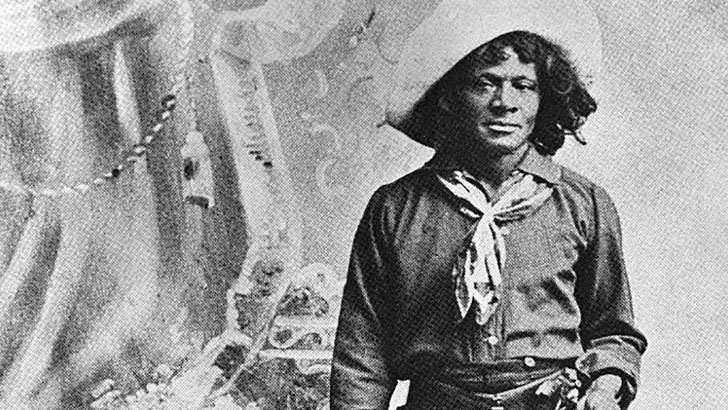 A cowboy’s outfit wouldn’t be complete without his kerchief or bandana, which served various essential functions such as shielding the mouth and nose from dust, protecting the neck from the sun, and keeping the ears warm in cold weather. While Hollywood often depicted outlaws using them to conceal their faces during robberies, these items were typically made from a range of materials and were predominantly red. To wear one, a person would fold it into a triangle and secure it around their neck with a knot.
A cowboy’s outfit wouldn’t be complete without his kerchief or bandana, which served various essential functions such as shielding the mouth and nose from dust, protecting the neck from the sun, and keeping the ears warm in cold weather. While Hollywood often depicted outlaws using them to conceal their faces during robberies, these items were typically made from a range of materials and were predominantly red. To wear one, a person would fold it into a triangle and secure it around their neck with a knot.
Drinking Alcohol Was Rough
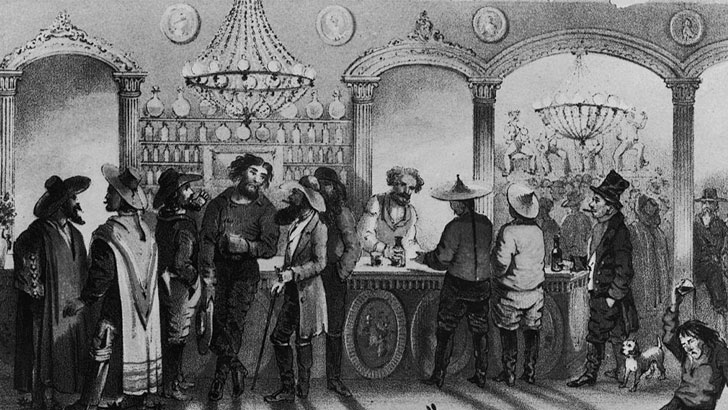 During earlier times, many saloons served an extremely potent alcoholic beverage made from burnt sugar, alcohol, and chewing tobacco, known as “firewater,” which cowboys would sometimes ignite to prove its high alcohol content. Another well-liked drink was cactus wine, a blend of tequila and peyote tea. The alcoholic drinks of that era were far more robust than those of today, and there was no shortage of individuals imbibing them, which often resulted in numerous bar fights and fatalities.
During earlier times, many saloons served an extremely potent alcoholic beverage made from burnt sugar, alcohol, and chewing tobacco, known as “firewater,” which cowboys would sometimes ignite to prove its high alcohol content. Another well-liked drink was cactus wine, a blend of tequila and peyote tea. The alcoholic drinks of that era were far more robust than those of today, and there was no shortage of individuals imbibing them, which often resulted in numerous bar fights and fatalities.
Spitting Was A Health Hazard
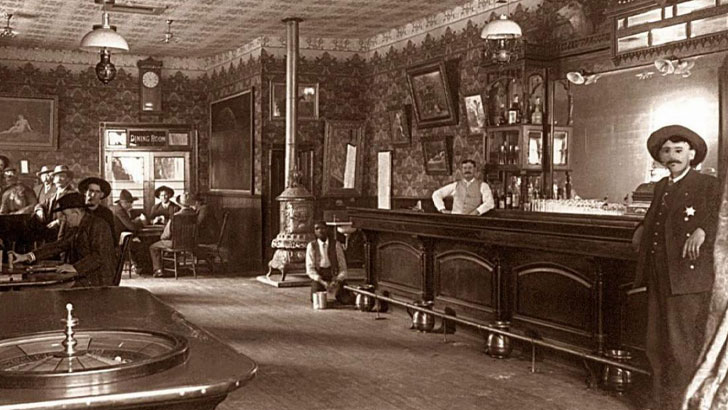 In the Old West, it was common for men to chew and spit tobacco, and many would spit directly on the floor of saloons where spittoons lined the bar, as depicted in the image. The saliva on the floor and in the spittoons was then mixed with sawdust, which created a hazardous environment due to the increased risk of respiratory diseases like tuberculosis and pneumonia. As many travelers rented out space in saloons to sleep on the floor, the spit-ridden sawdust became a breeding ground for germs. As a result, some places imposed a complete ban on spitting, and those who violated this rule were subjected to a fine or imprisonment.
In the Old West, it was common for men to chew and spit tobacco, and many would spit directly on the floor of saloons where spittoons lined the bar, as depicted in the image. The saliva on the floor and in the spittoons was then mixed with sawdust, which created a hazardous environment due to the increased risk of respiratory diseases like tuberculosis and pneumonia. As many travelers rented out space in saloons to sleep on the floor, the spit-ridden sawdust became a breeding ground for germs. As a result, some places imposed a complete ban on spitting, and those who violated this rule were subjected to a fine or imprisonment.
Sleeping Bags
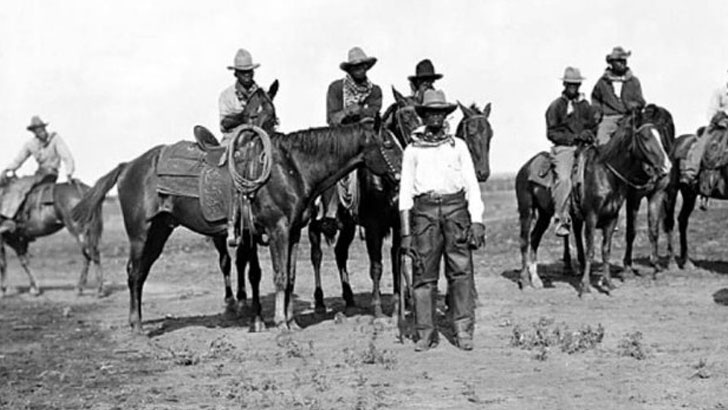 Despite the common misconception, cowboys did not sleep directly on the ground while out on the trail. Instead, they used a bedroll that was akin to a modern-day sleeping bag. The bedroll was constructed from waxed and waterproofed canvas material and could be easily carried by the cowboy, rolled up and strapped to his back while riding on horseback.
Despite the common misconception, cowboys did not sleep directly on the ground while out on the trail. Instead, they used a bedroll that was akin to a modern-day sleeping bag. The bedroll was constructed from waxed and waterproofed canvas material and could be easily carried by the cowboy, rolled up and strapped to his back while riding on horseback.
Beer Towels
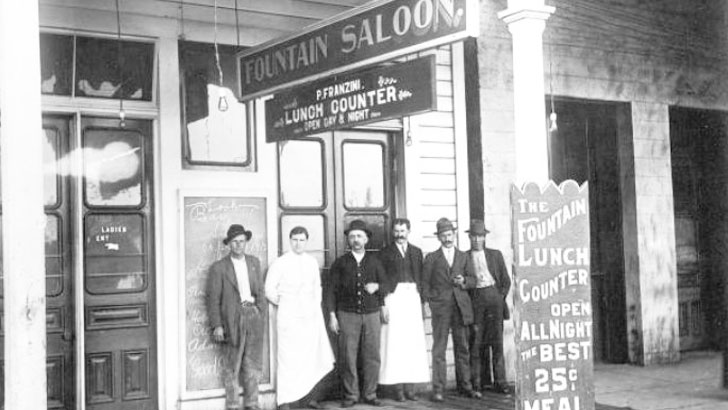 Cowboys often share a common interest in addition to horseback riding: drinking beer. When indulging in this beverage, they would often use a beer towel to wipe away any foam left on their faces.
Cowboys often share a common interest in addition to horseback riding: drinking beer. When indulging in this beverage, they would often use a beer towel to wipe away any foam left on their faces.
Bonnets
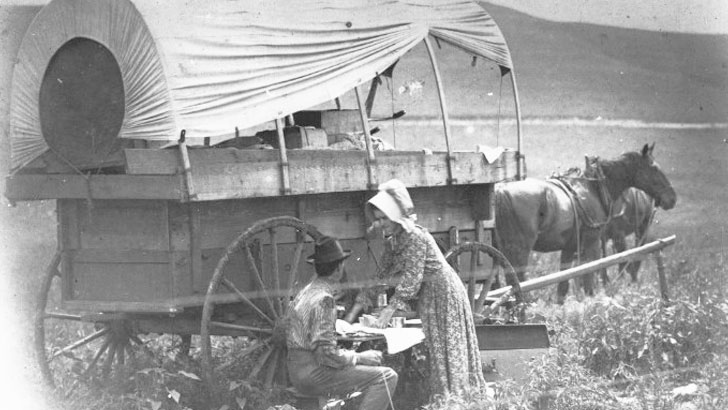 In contrast to the men, women in the Old West took a different approach to maintaining their hygiene. They protected their skin from the sun’s damaging effects by wearing bonnets, which helped keep their complexion clear and white. The women recognized the importance of sun protection and thus wore bonnets almost everywhere they went, even when spending extended periods outdoors.
In contrast to the men, women in the Old West took a different approach to maintaining their hygiene. They protected their skin from the sun’s damaging effects by wearing bonnets, which helped keep their complexion clear and white. The women recognized the importance of sun protection and thus wore bonnets almost everywhere they went, even when spending extended periods outdoors.
Washing Clothes
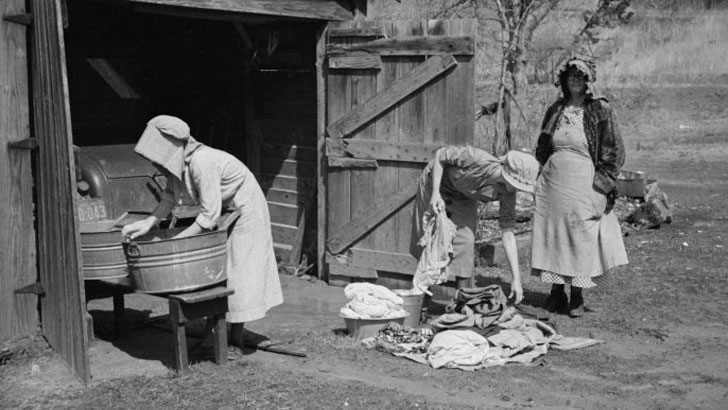 Life on the pioneer trail was far from hygienic, but pioneers found ways to keep their clothes clean. They used salt, scrubbing boards, and even blue dye to maintain their clothing’s cleanliness. Interestingly, the use of blue dye eventually led to the creation of blue jeans, which became a popular clothing item among pioneers and eventually grew to become an iconic fashion item globally.
Life on the pioneer trail was far from hygienic, but pioneers found ways to keep their clothes clean. They used salt, scrubbing boards, and even blue dye to maintain their clothing’s cleanliness. Interestingly, the use of blue dye eventually led to the creation of blue jeans, which became a popular clothing item among pioneers and eventually grew to become an iconic fashion item globally.
Prostitution
 During the Old West era, brothels were a common feature in towns and cities, and surprisingly, the brothel madam played a significant role in empowering women. These women not only provided sexual services but also acted as confidants and advisors to the male clientele. Many of these madams were business-savvy and owned their own brothels, giving them a level of financial independence not typically available to women at the time. They were known to support their employees and provide them with opportunities for education and advancement, which helped to promote the idea of women’s empowerment in society.
During the Old West era, brothels were a common feature in towns and cities, and surprisingly, the brothel madam played a significant role in empowering women. These women not only provided sexual services but also acted as confidants and advisors to the male clientele. Many of these madams were business-savvy and owned their own brothels, giving them a level of financial independence not typically available to women at the time. They were known to support their employees and provide them with opportunities for education and advancement, which helped to promote the idea of women’s empowerment in society.
Brothels
 In the Wild West, sexually transmitted diseases were rampant, spreading quickly and easily. Brothels were a particularly risky environment, with up to 90% of the women infected with syphilis or gonorrhea, which they transmitted to their clients. The only treatment available at the time was Mercury cream, which was far from safe.
In the Wild West, sexually transmitted diseases were rampant, spreading quickly and easily. Brothels were a particularly risky environment, with up to 90% of the women infected with syphilis or gonorrhea, which they transmitted to their clients. The only treatment available at the time was Mercury cream, which was far from safe.
Period Hygiene
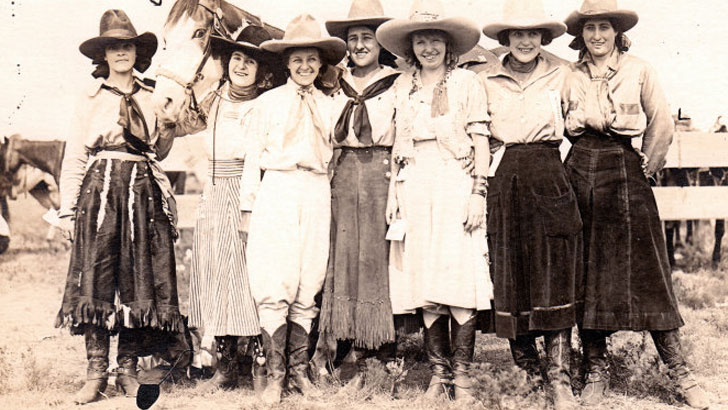 Women on the trail had a solution for their menstrual cycle, thanks to Lister’s belt, the first disposable napkin introduced in 1896. Before this innovation, women had to make do with whatever materials were available, including paper found on the trail. The introduction of Lister’s belt made it much easier for women to manage their periods and maintain personal hygiene. It’s amazing to think about the resourcefulness and resilience of women during this time.
Women on the trail had a solution for their menstrual cycle, thanks to Lister’s belt, the first disposable napkin introduced in 1896. Before this innovation, women had to make do with whatever materials were available, including paper found on the trail. The introduction of Lister’s belt made it much easier for women to manage their periods and maintain personal hygiene. It’s amazing to think about the resourcefulness and resilience of women during this time.
Calomel Danger
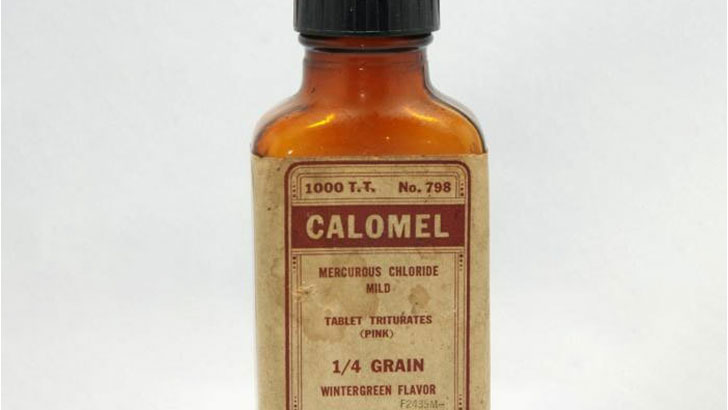 In the Wild West, there were frequent health-related issues, requiring medicine to be made quickly. One such medication was Calomel, which was made from mercurous chloride and was used to cleanse the body. Unfortunately, it often had the opposite effect, either causing a person’s teeth to soften or poisoning them with mercury. Either way, it was a risky treatment that many would have avoided if they had known the side effects.
In the Wild West, there were frequent health-related issues, requiring medicine to be made quickly. One such medication was Calomel, which was made from mercurous chloride and was used to cleanse the body. Unfortunately, it often had the opposite effect, either causing a person’s teeth to soften or poisoning them with mercury. Either way, it was a risky treatment that many would have avoided if they had known the side effects.
Rise of Deodorant
 Surprisingly, deodorant has been available for Westerners for quite some time. The first company to create deodorant was Mum in 1888, using a thick paste. However, it wasn’t widely used by many people.
Surprisingly, deodorant has been available for Westerners for quite some time. The first company to create deodorant was Mum in 1888, using a thick paste. However, it wasn’t widely used by many people.
Medicine Cocktails
 Despite the 19th century being relatively recent, the lack of advanced medicine at the time caused many issues. As a result, people had to rely on homemade remedies and cocktails to treat illnesses. Brandy was a popular liquor used for medicinal purposes, serving as both a sedative and a treatment for various conditions.
Despite the 19th century being relatively recent, the lack of advanced medicine at the time caused many issues. As a result, people had to rely on homemade remedies and cocktails to treat illnesses. Brandy was a popular liquor used for medicinal purposes, serving as both a sedative and a treatment for various conditions.
Mental & Emotional Health
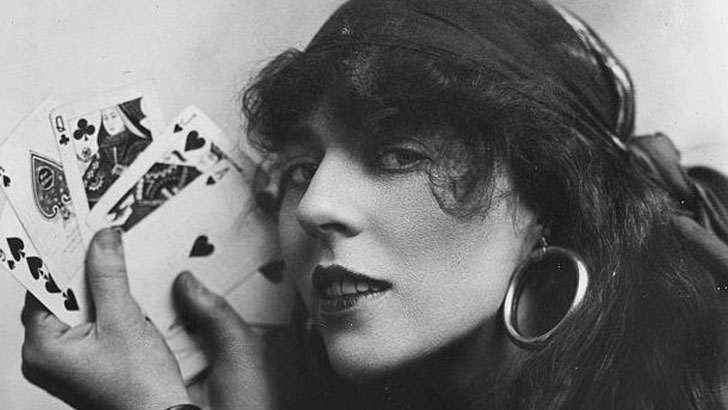 Surprisingly, cowboys and pioneers had a fascination with fortune-telling and superstitions, and they employed various methods, such as crystal ball gazing and tarot card readings. Even the Romani Gypsies, who migrated from Europe, brought their fortune-telling practices to the Old West.
Surprisingly, cowboys and pioneers had a fascination with fortune-telling and superstitions, and they employed various methods, such as crystal ball gazing and tarot card readings. Even the Romani Gypsies, who migrated from Europe, brought their fortune-telling practices to the Old West.
Hot Springs
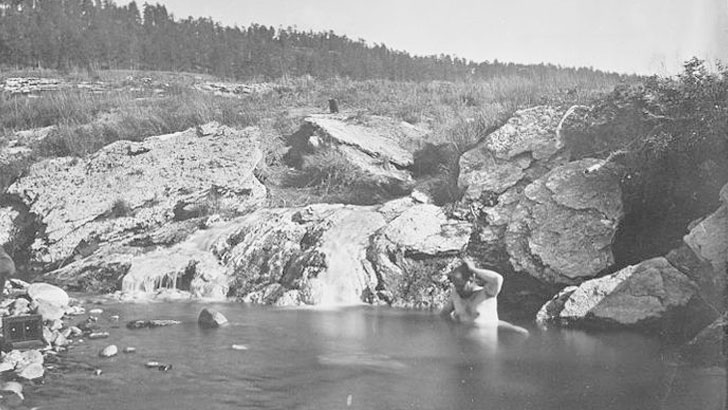 Despite the scarcity of clean water, American westerners still prioritized cleanliness and hygiene for comfort and health reasons. As a result, over time, bathing habits developed and improved with new techniques and products for maintaining personal hygiene.
Despite the scarcity of clean water, American westerners still prioritized cleanliness and hygiene for comfort and health reasons. As a result, over time, bathing habits developed and improved with new techniques and products for maintaining personal hygiene.
Cultural Backgrounds
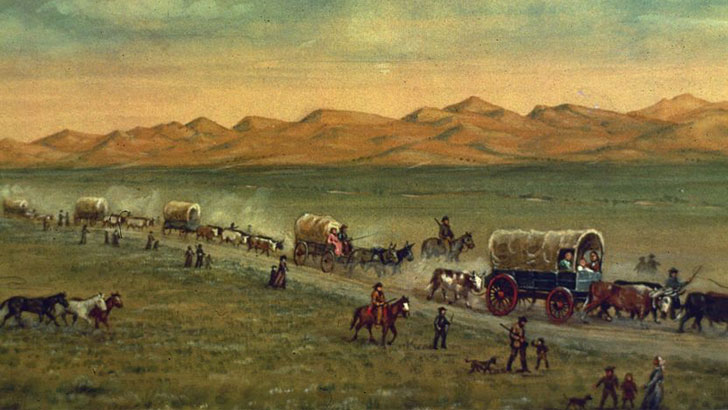 During a dig site excavation in Deadwood, South Dakota, a team of archaeologists discovered a pair of tweezers in 2005. It is believed that the tweezers were frequently used by the Chinese population that resided in Deadwood, who plucked their facial hair instead of shaving. Although the tweezers were also reportedly used for smoking opium, it is speculated that the ones found were primarily intended for feminine hygiene purposes in the Old West.
During a dig site excavation in Deadwood, South Dakota, a team of archaeologists discovered a pair of tweezers in 2005. It is believed that the tweezers were frequently used by the Chinese population that resided in Deadwood, who plucked their facial hair instead of shaving. Although the tweezers were also reportedly used for smoking opium, it is speculated that the ones found were primarily intended for feminine hygiene purposes in the Old West.
Women’s Complexions
 During the 19th century, many middle and upper-class women aimed to keep their skin as clear and white as possible. This was achieved by either bleaching their skin or avoiding the sun as much as possible. Whenever they went outside, they wore bonnets, gloves, and long sleeves to shield themselves from the sun. However, not all pioneer women had access to such luxuries and were exposed to the sun regardless. Some women even went against social norms and lived more like cowboys, disregarding the expectations of traditional femininity.
During the 19th century, many middle and upper-class women aimed to keep their skin as clear and white as possible. This was achieved by either bleaching their skin or avoiding the sun as much as possible. Whenever they went outside, they wore bonnets, gloves, and long sleeves to shield themselves from the sun. However, not all pioneer women had access to such luxuries and were exposed to the sun regardless. Some women even went against social norms and lived more like cowboys, disregarding the expectations of traditional femininity.
More From Auto Overload
-


Start ‘Em, Sit ‘Em Week 4: Fantasy QBs
-


Hidden Meanings in Brand Logos
-


Fascinating Things Only Dubai Can Offer
-
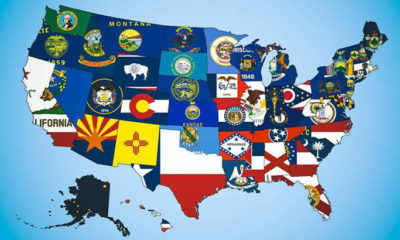

Fascinating Laws Around the United States
-


50 Uncool Things Boomers Won’t Give Up
-


The Greatest NBA Players Of All Time – Ranked
-


The Secret Life Of Ivanka Trump
-


Hidden Car Features You Didn’t Know Existed
-


Athletes Who Lost it All
-


Iconic Roles Almost Played By Another Actor
-


Unbelievable Moments Captured At The Airport
-


Hilarious Moments That Sum Up Office Life

